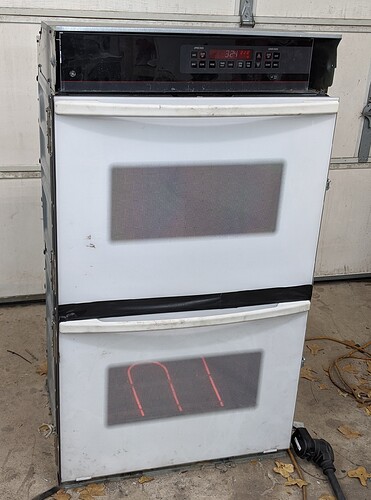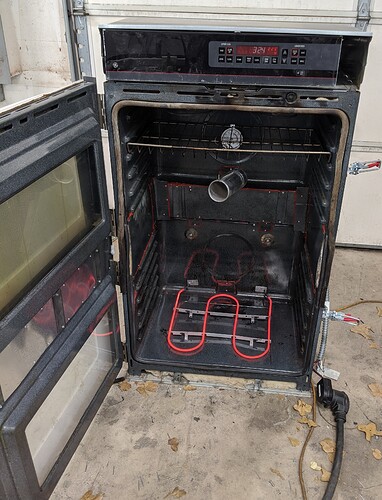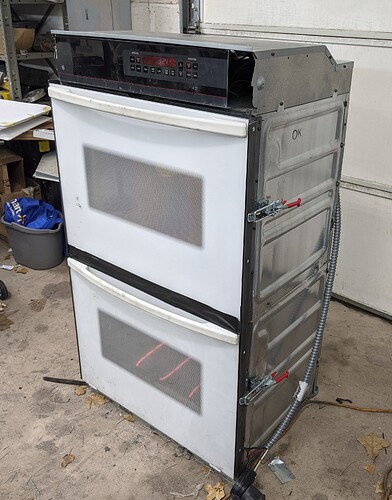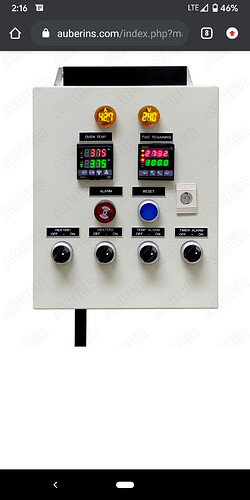So I’m moving everything into my new shop and I’m wanting to enclose my double oven I made for powder coating. I have a bunch of left over OSB board from my interior walls of the shop, so I was planning on using that. My question is, is there a general rule of thumb for how much space you should leave in between the oven and the surrounding walls for the oven enclosure? I would assume you would want some gap to allow heat to escape. Just seeing if anyone on here possibly knew.
I am not sure in your case, but a microwave/convection oven in an RV, which is surrounded by cabinets usually, they typically want at least 3" all the way around and it needs to be vented.
Good info to know, thank you
Since you used normal household ranges which are designed for kitchen use, those are normally built for zero clearance on sides & rear so they can slip into counter/cabinet spaces. The clearance above the range is typically 13-16" between the range and a cabinet mount microwave. Part of that is due to the physical room needed for pots & pans and part is due to the heat from the range burners.
Gas ranges usually have larger clearances due to the need for combustion air (1" up to 6" for some models).
You could get the manufacturer’s specifics for the donor ovens you used to be safe but you’ve got a fair amount of flexibility available. The kitchen installation is spec’ed based on the occasional self-cleaning cycle which runs into the 700F temp range. You’re only doing 400ish depending on your powder so you’ve got a more conservative use case than the manufacturer was using to come up with their stand off requirements.
So the oven typically is a snug fit in the opening of a house huh?
Yep. I have maybe 1/4" on the sides of my range to the cabinets and about 1.5" in the back due to where my range outlet is placed on floor and getting in the way of pushing it back further.
GE has a whole spec list for appliance clearances on the web for architects & designers to use when they’re designing houses & kitchens. But the specifics for the ranges you used will also be on their manufacturer’s website. Just be glad you didn’t use some Viking restaurant grade stuff 
Awesome james, appreciate the help
You may even want to insulate to reduce the heat loss as that will help stabilize the internal temps.
I have thought about that but I have insulation wrapped around the entire oven already, then have the metal casing around that
Show us some pics I’m interested in doing this myself…
Here it is, I essentially just separated the double oven and made it one whole unit. The control board just recently went out so I just ordered a pdi controller
I picked up an “working” oven off of Craigslist for free and it had a bad board, $195. I got a brand new GE oven at Home Depot for $230 with a tiny scratch and a couple of missing knobs. It’s definitely not big enough. I’d like to find an old delivery van with no windows and slice 3 feet off the back and use that as an oven. If anything it would be unique…
Was the fan that cools the board still working. I’ve got a lot newer version of this oven in my house and it has a fan that blows during and for a while afterwards when in use.
Unfortunately no it wasn’t. The screen kept giving me an f7 code, which basically means there was some board issue. I think I will be much more happy with the new unit
Where’s it coming from
I bought it from Auber instruments. It’s pretty much a universal kit and you can even wire up a fan and lights if you wanted.
man…oh…man…it lives!!!..it lives!!!..
I agree completely with Jamesdhatch…he is right.
But I would be very careful with ventilation with OSB…the off gasing from the glue due to heat is something to be concerned about…
for the first few times of use really ventilate to prevent off gasing issues
Interesting, never thought about that! Thank you for the tip



